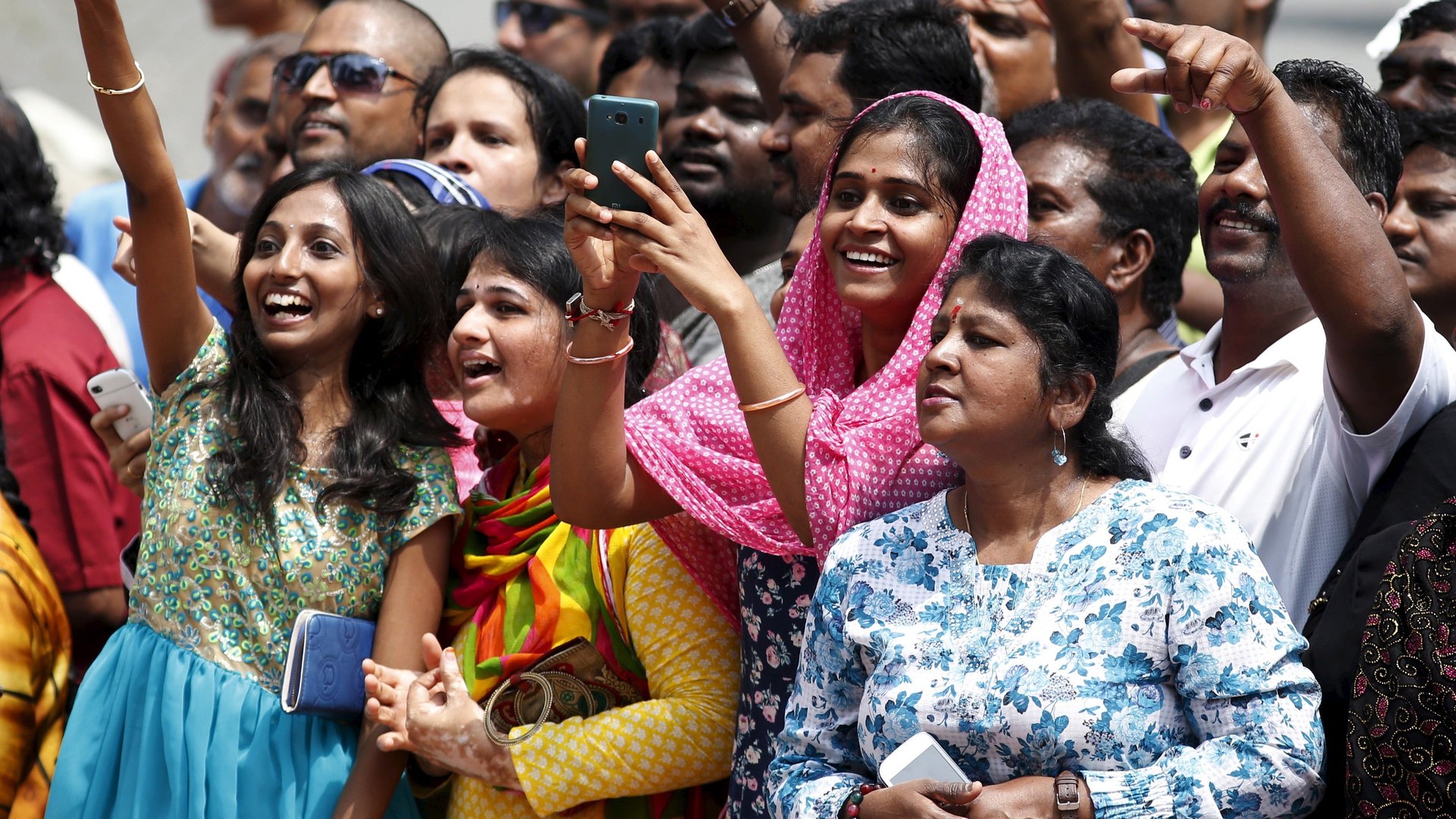Apple is losing ground in the world’s third-largest smartphone market
Indian consumers are ditching Apple devices for cheaper, more viable options.


Indian consumers are ditching Apple devices for cheaper, more viable options.
One glance at Apple iOS’ slipping market share in India shows that the brand is taking a beating for its unaffordability. Share for iOS devices was sliced almost in half in the second quarter, down to 2.4% from an already small 4.5% a year earlier, according to a report by research firm Strategy Analytics. Google’s Android charged forward, growing its market share from 90% to over 97%.
India is not unique in its preference for Android—the operating system leads the pack worldwide. In India Apple is losing grip not only because of fierce competition from cheaper devices, but because its sales strategy isn’t working. The iPhone SE, which was supposed to be Apple’s cheapest iPhone edition, started retailing at Rs 39,000 ($493). That’s considerably higher than the $158 average smartphone price in India.
Apple has specific distribution and retail partners but in a country where a third of all smartphone sales were conducted on the internet, Apple does not sell products online. “Indian carriers don’t tend to provide subsidies either,” Linda Sui, Strategy Analytic’s director for wireless smartphone strategies, said in an interview. “Consumers have to pay the full cost of an iPhone upfront.” Although Apple tried introducing a 24-month lease plan for corporate customers, the scheme did not gain steam.
China and India are the largest smartphone markets outside the US. Apple has fared well in China—barring this year’s ban—but India has been a tough nut to crack. India “is a very difficult market for Apple to address, because consumers are extremely price-sensitive,” said Canalys analyst Daniel Matte.
While China’s families are small as a result of the one child policy, Matte says that children in larger Indian families face the dilemma of sharing incomes and splitting allowances, making it more difficult for individual family members to afford smartphones.